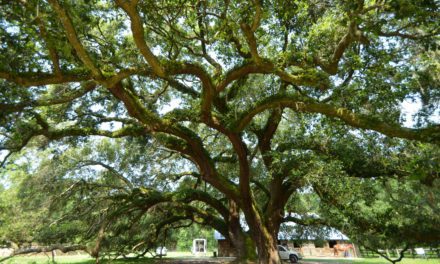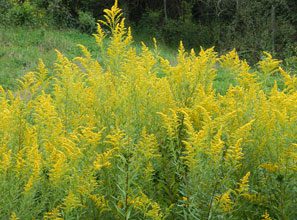Because I was born in Kentucky with horses in my soul, I tear up every time I hear “My Old Kentucky Home” wafting through the springtime television air as a group of gorgeous three-year-old Thoroughbreds step onto the Churchill Downs track the first Saturday in May for the start of the Kentucky Derby. Whether I’m perched on a stool at a noisy New Jersey sports bar sipping a few fingers of house bourbon or decked out in a flowery fascinator clutching an icy mint julep at a party in a Bluegrass farm manse, my eyes stay misty until Stephen Foster’s beloved anthem ends and the racing crowd gives up a mighty roar.
Until this year. A horse-loving friend and I watched what the late, great commentator Howard Cosell called “the most exciting two minutes in sports” in a quiet living room, complete with iced julep cups containing a jigger of Woodford Double Oaked and a rock or two. The setting was perfect for a nostalgic canter down memory lane. But with the recent news from Churchill Downs uppermost in my mind, this lady didn’t weep.
Here’s a little background….
At that storied track, the day before the Derby is known as “Oaks Day” because the 3-year-old-filly equivalent of the Run for the Roses – the Kentucky Oaks – takes place. And this year on Derby Eve, the University of South Carolina’s remarkable OLLI (Osher Lifelong Learning Institute) program offered a racehorse-centric class featuring Lisa J. Hall, the curator of the Aiken Thoroughbred Hall of Racing and Museum. In case you don’t know, the SC town of Aiken is all about horses – racehorses, steeplechasers, polo ponies, Standardbreds, three-day eventers, show jumpers, hunters, and good ol’ backyard mounts that one so inclined can hop aboard and ride on some 65 miles of deep sand trails through 2,100-acre Hitchcock Woods, a carefully-maintained, urban longleaf pine forest, one of the largest in the country. Pulitzer Prize-winning novelist Jane Smiley entitled her novel that features Aiken as a setting, Horse Heaven.Enough said.
At any rate, I attended that class, and through Hall’s marvelous knowledge of Aiken’s equine traditions, the museum’s historic photos and memorabilia, and her well-told tales of its horsemen, horsewomen, and four-legged “rock stars,” I returned for a few hours to the 1970s and the three happy winters I spent there galloping young Thoroughbreds in the mornings and riding through those luscious woods in the afternoons. Needless to say, I left that OLLI experience in my mind’s own version of “horse heaven.”
Where I remained until that evening, when I Googled the Derby entries for the next day’s big race, and happened across the headline “Seven Horses Die at Churchill Downs in the 10 Days Before Derby.” Brought me up short. Purely unexpected news. And sadly, true. The track issued a statement calling the incidents “unacceptable.” One trainer who trained two of the horses that died was suspended pending investigation.
Next day, throughout the mile-and-a-quarter first leg of the Triple Crown of Racing, I held my breath. As did, I feel certain, many more spectators, all hoping for the best. Fortunately, the race itself was a terrific one, won in an impressive come-from-behind stretch run by 15 – 1 longshot Mage, beautifully ridden by Eclipse-Award-winning jockey Javier Castellano in his first Derby victory.
Without going into detail about specific injuries that either ended those unfortunate seven horses’ lives or seemingly, called for euthanasia, let’s just say that Thoroughbreds are animals bred for racing competition. The majority seem to thrive on the challenge, though a potentially catastrophic injury can occur at any point when a horse is racing or even frolicking in a field or paddock. The thousand-pound animals’ spindly legs sustain a lot of concussive force, and their “breaking down,” i.e. becoming seriously injured, on the track while training or racing has always been a tough part of the sport. Some horses can take time off to rest an injury, be brought back to training slowly, and recover to race again.
However, these equine athletes are expensive to maintain. If they’re not running, they’re not earning paychecks. Often even if they are running, they’re not earning paychecks. So the temptation can be to relieve the pain of an injury with a drug and get them back on the track ASAP. Sometimes too soon. Statistics indicate that the US has far more racehorse injuries that result in an animal passing away than does Europe, where racing is popular and horses tend to thrive on “hay, oats, and water” without nearly as much drug usage as in America.
During my stint as an exercise rider in the ‘70s, horses certainly suffered injuries and the occasional euthanizing occurred. I remember while working as assistant to the Horsemen’s Bookkeeper one spring at prestigious Keeneland Racecourse in Lexington KY, the track had to be shut down temporarily for complete resurfacing after a number of equine injuries came about as a result of a track surface issue. And the deaths of more than three dozen horses during Santa Anita Park’s late 2018 through fall of 2019 season resulted in stricter protocols on drug usage and closer monitoring of horses at that track.
Fortunately, the Thoroughbred industry has recently created brand-new watchdog legislation, the Horseracing Integrity and Safety Authority (HISA) Act. Says Marty Irby, executive director at Animal Wellness Action, “We’re committed to the long haul of stamping out doping, and other abuses in American horseracing, and seeing proper enforcement and implementation of the first new federal horse protection law enacted in half a century that we worked so hard to secure.”
This gives me hope. As does Churchill Downs’s promised investigation to get to the bottom of its recent loss of too many horses in too short a time. Another has died there since the Derby. What I know for sure is that the Thoroughbred industry is filled with people who are caring and are committed to treating animals humanely. Some of the finest folks – animal lovers all – I met while in that business, and that fact remains today. The loss of those vibrant equine lives must serve as a wake-up call in an industry where the search for a path to a quick buck is destroying its reason to be.
“In the steady gaze of the horse shines a silent eloquence that speaks of love and loyalty, strength and courage. It is the window that reveals to us how willing is his spirit, how generous is his heart.” – Author Unknown
Horses are dependent upon the humans who care for them and are likely to give back 100 percent if they have the capacity and are treated fairly. We owe them that much.
“Horses change lives…They provide peace and tranquility to troubled souls. They give us hope!” – Toni Robinson









